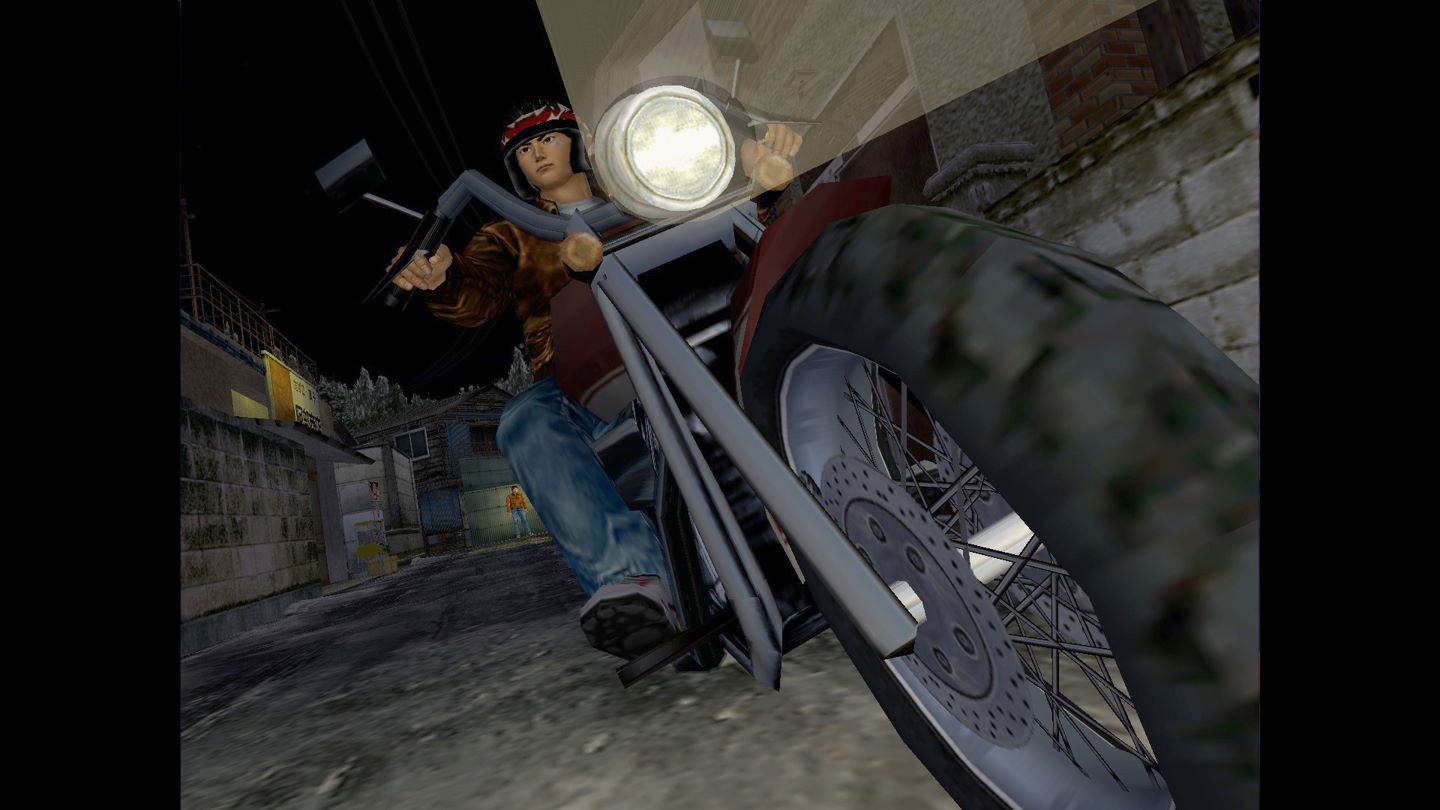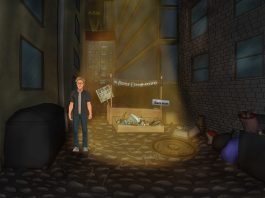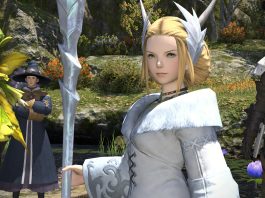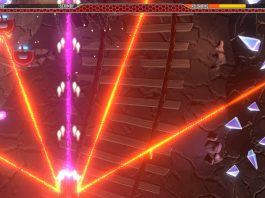Every gamer will have a game or game series that has always passed them by. For example, I have never played a Zelda game. Shock horror I know, but for my lack of Zelda, gamers across the world will have their own, whether that be Final Fantasy, Grand Theft Auto, Pokémon or another glaring omission.
I have always put Shenmue on my list of shame, simply because it sounded like the type of game I would revel in; story-driven, open-world exploration, masses of minigames and things to do. But for whatever reason – mainly not knowing anyone when I was younger who owned a Dreamcast – I never had the opportunity to. So, when Shenmue I & II got announced for Xbox One, PS4 and Steam, I knew this would be my chance. And with the team at d3t keeping most of the game the same as it was on Dreamcast, for better or worse it would be largely the same experience. That experience is certainly an excellent one, but some of the features seem very dated in the 20 years since the original release.
Currently at least, purchasing the Shenmue collection on Xbox grants access to both the first and second game. There is no way to purchase each one separately, but as these are games that immediately follow on from each other it makes sense.
The overall Shenmue story has players control Ryo Hazuki, a teenager who is out to avenge the death of his father at the hands of a Chinese man named Lan Di. Spoiler alert, don’t expect a conclusion to this story by the end of Shenmue II, as series creator Yu Suzuki always planned the story to span at least three games. In that case, it’s probably best not to anticipate a finale by the time Shenmue III releases in 2019 either.
Throughout these games Ryo will partake on an epic journey to catch Lan Di and get his revenge. Amongst others, he will do some investigative work to uncover the truth and find those infamous sailors, get a job at the harbour, get in lots of fights and even travel from his humble home town to Hong Kong.
Shenmue I opens with Ryo seeing his father being murdered first hand. After a tough night’s sleep, Ryo wakes up in the Hazuki residence and the game is then yours to do with what you will. But the world has an in-game clock and this must be adhered to so you’ll need to keep an eye on bedtimes, shop opening hours, and where NPCs will be at what time. It’s a gameplay mechanic that’s rarely used where the world is dependent on what time of day it is compared to just having a time of day and a day/night cycle. This is mainly due to the divisive nature of it and Shenmue is no exception to this.
Especially in the early hours, for large parts of Shenmue you can be sat watching the clock until it gets to the time required – whether you are waiting for the bars or a certain shop to open, you will at times be stuck waiting for something to happen. This adds to the mystery and intrigue of why Shenmue is so revered. But it also allows you to enjoy a bit of free-time.
Both Shenmue games feature an arcade where Ryo can easily wind away the hours, featuring classic SEGA games such as Hang-On, OutRun, Afterburner and Space Harrier all fully playable within the arcades across both games. They also include a darts minigame and several QTE offerings that are used to test speed and reflexes. This being the series that popularised the Quick Time Event (QTE), it means that they are used in many cutscenes throughout. Fail them, and you simply have to replay them from the beginning, at least in the first game.
Shenmue II attempted to expand on some of the issues that players had with the first game, including the option to fast-forward time if waiting for a scheduled event and not forcing the player to take a part-time job. Sadly, in these updated versions these features have not transferred over to the HD re-release for Shenmue I, but are still available for the sequel.
When you aren’t burning all your Yen at the arcade, Shenmue has several different game mechanics integrated into it. Originally starting life as a Virtua Fighter RPG, it comes with a robust fighting system with moves that can be learned and practised at the dojo in order to boost their strength. These use button inputs similar to beat ‘em ups and memorising them is useful when, towards the end of the first game, the fights become more frequent and far more difficult. Of course, a good old-fashioned bit of button bashing can achieve the same outcome.
Playing the games chronologically and at regular intervals will see you able to unlock new areas to investigate and explore. Starting off with the peaceful – aside from the murder – town of Dobuita, it won’t be long before you are exploring warehouses, secret basements and then even Hong Kong and further afield. Your journey comes across in the form of a classic staple of open-world adventures of not being fully open from the beginning, and it is exciting once again to play a game where this is the case – unlike more recent open-world offerings.
For the most part, the game plays identically to the original release – right down to the dodgy camera and laughably bad voice acting – but a few “quality of life” updates have been added. These include 1080p support and widescreen visuals during gameplay (cutscenes remain at 4:3 aspect ratio), the camera controls mapped to the right analogue stick (something which is a small improvement but don’t expect it to give full control or work as intended) and English and Japanese voice options and the ability to save at any point.
Shenmue II can also use a completed game save from the first – much like the Dreamcast release – and you are able to transfer money, items and move training progress. Fans of the series may be confused as to why money and items are transferred, especially considering the opening moments of Shenmue II, but it’s an option regardless.
Earning money is in short supply during the first game – at least until you get yourself a part-time job at the harbour about two thirds through – and thus gives Shenmue one of its quirkier moments that when playing through for the first time, you start to really understand why these games are held in such high regard. This is because you, as the player, must undertake this part-time job as a forklift driver, moving crates from one location to another; there is no way to get out of it if you want to progress the story. It’s equal parts bizarre game design, therapeutic, and sometimes monotonous but as your investigation and detective work continues during your lunch break and after you clock off, you understand this is perfectly fitting for Shenmue.
Thankfully in the second game this isn’t ever thrust upon you and there are other ways to make money.
Other quirky moments that help fill this world with life include the daily transition from day to night that occurs at 7pm each day in-game; it’s a beautiful moment where serene music plays, and you see the streetlights switching on. Some will see it as a throwaway moment and not pay much attention, but I always made sure I wasn’t going to be busy at 7pm and risk missing it.
Also, in Ryo’s house – specifically the kitchen – the fridge buzzes when you are near it, much like the sound from a regular fridge. Little things like this make this game world all the more special.
It isn’t without faults though, and both Shenmue I & II contain a variety of bugs, some game breaking. Cutscenes will cause the game to crash, whilst others don’t load properly and the camera is fixed looking up at the sky or at a wall whilst things continues. I even had a moment where the game shot forward and I missed a crucial plot element when looking for Charlie. More minor bugs exist too, such as invisible gacha models, SFX sound fluctuations, and one of the QTE minigames not registering when the correct button is pressed.
The achievements for the games are split across the two and in total add up to 55 achievements for 2000G. Both lists of achievements aren’t too demanding – though each have missable ones. The first game of the two is the shorter so is the easier completion but it’s tough to play one without the other; there’s a reason why they come as a pair.
Currently, Shenmue III is not due to release on the Xbox One, so it remains a mystery if we will ever be able to play it. Instead, we have these wonderful HD ports of Shenmue I and II, and as a first-time player of them, I fully understand why they are held in such high regard. I have enjoyed almost every aspect of them; the exploration, investigation, side content, fighting, even the forced forklift driving sections in the first game to an extent… even if coming home from my actual job to complete a virtual one wasn’t top of my list of things though to do on an evening.
Whether you are a newcomer or a series fanatic these are games that deserve to be played, and with a fantastic price to boot there isn’t really an excuse not to.
Play Shenmue. Now.












